Made famous in the 1932 film Freaks, Schlitzie performed in most of the major circuses of the early 20th century after being sold into the business when he was just a child.
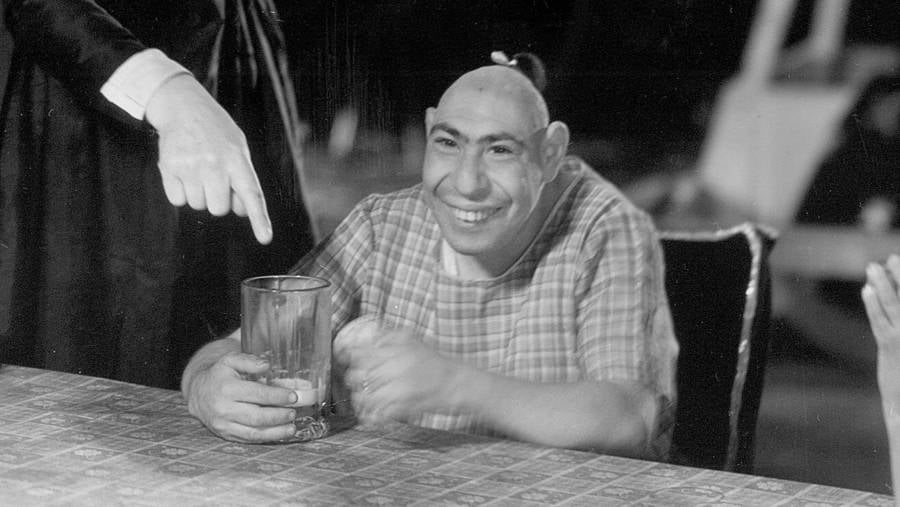
MGMSchliztie in the 1932 film Freaks.
Circus barkers called him “Monkey Girl” and the “Last of the Aztecs.” Audiences jeeringly referred to him as “pinhead,” “cretin,” or “moron.” But his fellow sideshow performers called him Schlitzie.
In the first half of the 20th-century, Schlitzie — whose real name is not known for certain — performed in all of the major circus of his day as well as moves like The Sideshow (1928) and Freaks (1932). Though he’d been born with physical and developmental disabilities, he was able to perform simple tasks, and spent his life under circus tents or on film sets.
But we know very little about Schlitzie’s life outside of sideshows. Though he made an impression on audiences, and was beloved by his fellow performers, many of details of Schlitzie’s life are sadly lost to time.
The Birth Of A Sideshow Performer: Inside Schlitzie’s Mysterious Childhood
Very little is know about Schlitzie’s early life, but it’s believed that he was born around 1901, possibly in the Bronx, New York, and possibly as Simon Metz. However, other sources claim that Schlitzie was born in Santa Fe, New Mexico, and that the name “Metz” came from one of his early caretakers. It was also long believed that Schlitzie was born in Mexico, but this rumor is likely linked to his sideshow “persona” as the “Last of the Aztecs.”
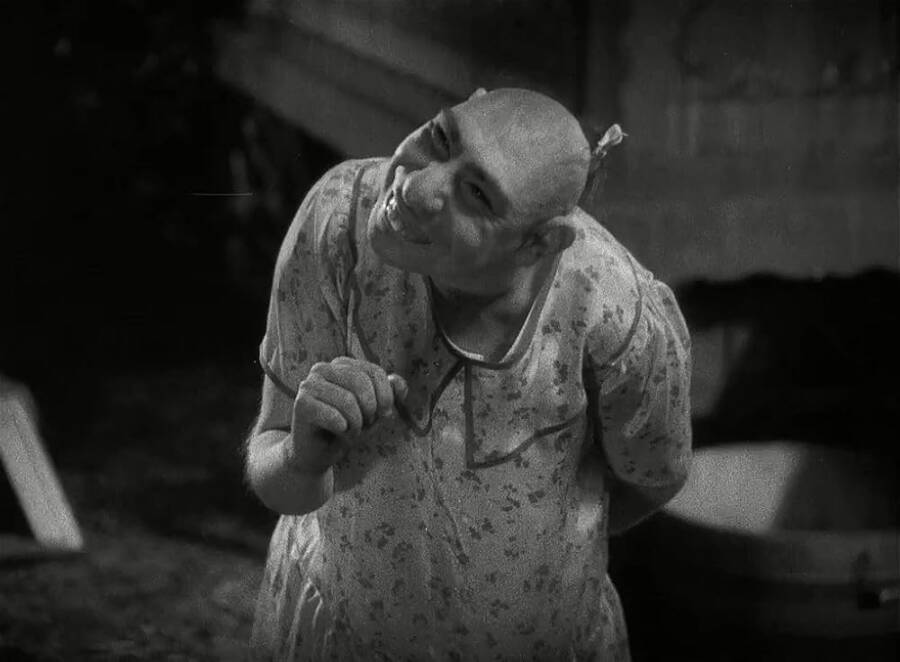
MGMSchlitzie in Freaks. The performer stood only four feet tall, and had the mental capacity of a child.
What is known is that Schlitzie was born with a condition called microcephaly, a medical condition that gave Schlitzie short stature, a small head, skull, and brain, and the mental capacity of a three- or four-year-old. It’s unknown what caused microcephaly in Schlitzie’s case, as the condition can be genetic, caused by an infection (like Zika), or triggered by alcohol or drug use by the mother. Some claim that Schlitzie had a sister, who also had microcephaly, but these reports are unconfirmed and likely rumor.
According to the Brooklyn Daily Eagle, Schlitzie’s parents sold him around the age of eight to Stephen and Augusta Mills, who ran a traveling sideshow. As a child, he would have joined other sideshow performers of his day, largely people with physical or developmental deformities.
From that point on, Schlitzie, whose microcephaly gave him a misshapen skull, would perform for jeering audiences as a “pinhead.”
The Sideshow ‘Freak’ Made Famous In Movies
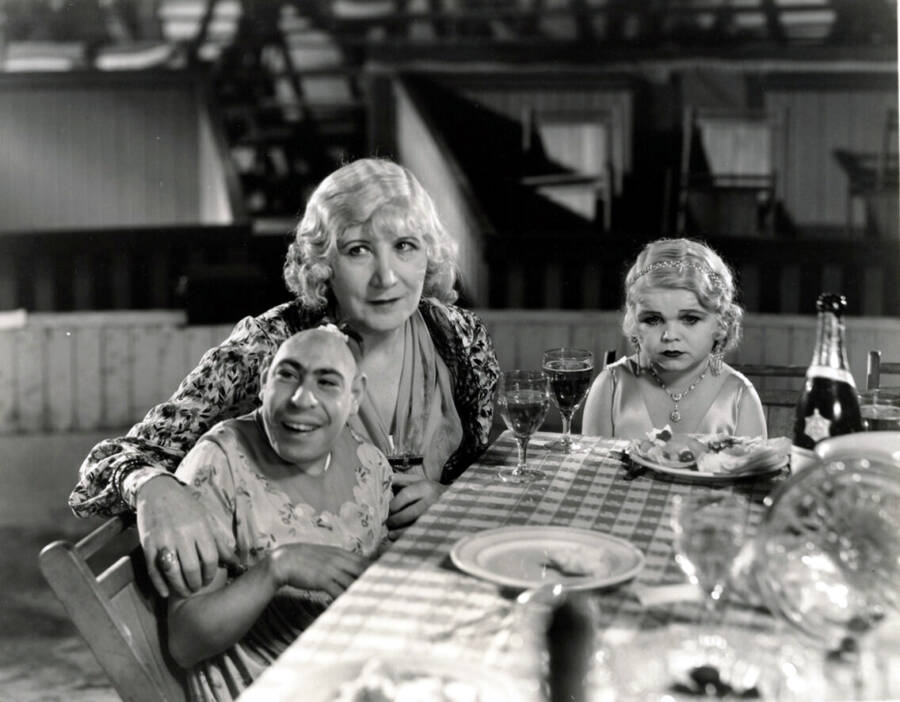
MGMSchlitzie performing with other actors in Freaks. .
From childhood on, Schlitzie performed with virtually every major circus of the early 20th century, including the Dobrich International Circus, Ringling Bros. and Barnum & Bailey Circus, the Tom Mix Circus, and the Clyde Beatty Circus. Though born male, he was often presented as female or androgynous, and performed in a dress. (This may have helped his caretakers more efficiently change the diaper that he needed to wear.)
One of his most popular acts was to count to ten. However, it is said that Schlitzie would often skip the number seven, possibly because he forgot it — or because he knew it would make the audience laugh.
But while Schlitzie was a popular sideshow performer, his fame truly skyrocketed in 1932, when he appeared in the horror film Freaks. A story of love and betrayal set in the world of sideshows, the film is most well-known today for featuring a number of actual sideshow performers like Schlitzie.
The movie was widely criticized for its grotesque horror, including the implication (later removed) that the sideshow performers castrated a man. The movie was largely assailed in the press (The Hollywood Reporter called it an “outrageous onslaught upon the feelings, the senses, the brains and the stomachs of an audience”) and banned in some places. One woman even threatened to sue MGM after claiming that the film caused her miscarriage.
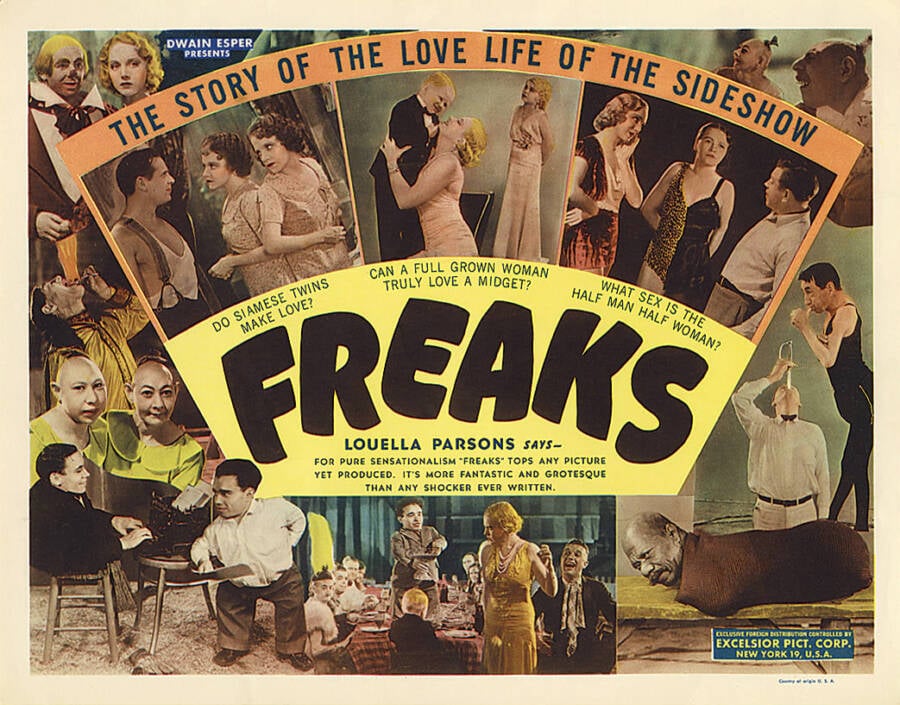
Wikimedia CommonsPoster for the 1932 film Freaks.
Despite the negativity surrounding the film, however, critics adored Schlitzie, who appeared in two scenes and spoke in a soft, slurred tone. His innocent demeanor charmed them, just as it had charmed the cast and crew.
“Schlitzie was a triumph,” journalist Faith Service wrote, according to the Brooklyn Daily Eagle, “…a favorite of the MGM lot…”
But though briefly famous, Schlitzie’s position in life remained precarious. He remained at the mercy of his caretakers — for better and for worse.
The Final Years Of The Famous Sideshow Performer
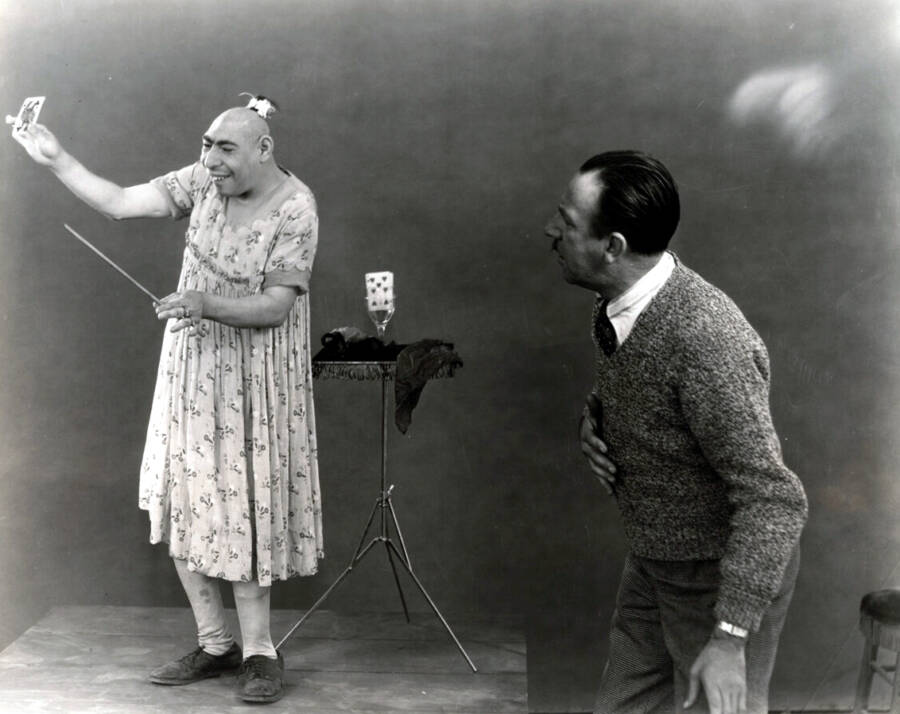
MGMSchlitzie performing with another actor in Freaks.
After the success of Freaks, Schlitzie continued to perform in sideshows. In 1936, he was adopted by George Surtees, who signed him to the Tom Mix Circus. (This is why Schlitzie’s name is sometimes documented as “Schlitzie Surtees.”) But while George, a chimpanzee trainer, cared for Schlitzie for decades, his death in 1965 left the sideshow performer without protection.
At that point, Surtees’ daughter — who had no interest in caring for him — had Schlitzie committed to Los Angeles Hospital.
Schlitzie was committed there for two sad, lonely years. Though he’d never had a family or a permanent home, circus life was the only life he’d ever known. No longer was Schlitzie surrounded by a cast of colorful performers. Hospital life was sterile, frigid, and lonely.
By happy coincidence, however, a sideshow sword swallower named Bill Unks happened to recognize Schlitzie at the hospital in 1967. Unks immediately lobbied to be made Schlitzie’s caregiver, and the hospital allowed Schlitzie to leave the hospital under his care.
Though the world of sideshows had changed since the early 20th century — “freak” shows were no longer in vogue, and performers were more likely to be snake charmers or sword swallowers than people with disabilities — Schlitzie was able to find performance opportunities. He performed in Toronto, New Mexico, and Pennsylvania, and even appeared at the LA Memorial Sports Arena with Ed Sullivan in 1969. After his subsequent “retirement,” Schlitzie also entertained people in Los Angeles by dancing and feeding pigeons at MacArthur Park, according to the Hollywood Reporter.
Then, in 1971, Schlitzie died at the age of 70.
Despite his fame, Schlitzie had never made any significant amount of money. He couldn’t even afford a gravestone, and was initially buried in an unmarked grave. However, fans ultimately raised money to mark his resting place at Queen of Heaven Cemetery in Rowland Heights, Los Angeles, with a simple black stone.
It was a final act of kindness for a man who, despite the odds against him, had made an impact on countless people throughout his life.
After this look at Schlitzie, discover the stories of other sideshow performers, such as the conjoined Hilton Sisters and Lobster Boy.





